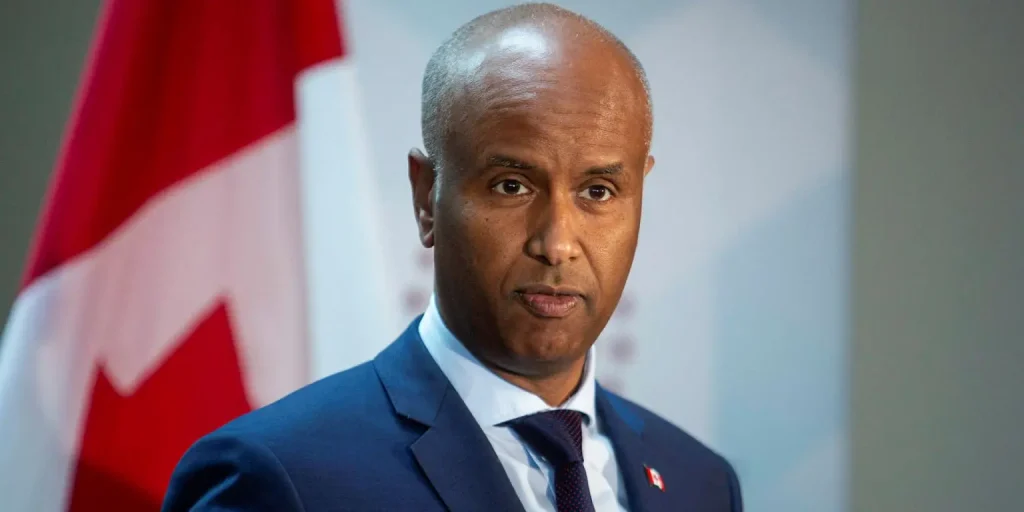Canada debuts its first-ever strategy for Africa, as Ottawa seeks to diversify markets and blunt geopolitical shocks amid rising trade tensions with Washington.
Early in March, Canada unveiled its much-touted Global Africa Strategy in a subdued Toronto event, timed eight days before a cabinet reshuffle and just weeks ahead of anticipated federal elections.
The 22-page document, delayed by 18 months, sidestepped grand declarations, focusing instead on steps to tap into Africa’s over US$2.1 trillion consumer market and secure critical minerals for Canada’s green transition.
In 2024, Canada’s trade with African nations climbed to $15.1 billion, marking a 30% growth over five years. The new strategy could accelerate that growth and help Canada reduce its dependence on U.S. trade. In 2024, the United States accounted for 76% of Canada’s exports, with crude oil trade alone reaching 97.4%.
This reliance has left Canada vulnerable to geopolitical shocks, including the Trump administration’s recent threats to impose steep tariffs on Canadian goods.
Economist Aly Khan Satchu, however, observed that while Ottawa viewed Africa as a strategic opportunity, the world’s ninth-largest economy would have to step up significantly before being seen as a major partner for the continent.
“Canada is going to have to put more meat on the bone if they are to be taken seriously and not just as being opportunistic,” he said.
With global rivals like China, the EU, and Gulf states already entrenched, Ottawa’s announcement risks being viewed merely as an electoral gambit. China’s trade with Africa hit US$282 billion in 2023, while the EU’s Global Gateway initiative alone has earmarked some €150 billion for African infrastructure.
India recently signed a lithium mining deal with Zimbabwe, while Gulf states are funneling billions into ports and renewable energy projects, and Russia has expanded security partnerships in the Sahel.
Ottawa said its Africa strategy is part of its plan to “seize opportunities to strengthen economic and national security, including by diversifying its markets; improving supply chain resilience…while promoting local benefits in Africa.”
The GAS is Canada’s first global strategy.
Mélanie Joly, Minister of Foreign Affairs, has promised better days for Ottawa’s partnerships with African states.
“Our message to the African continent is clear: We want to build a brighter and more prosperous future for Canadians and African partners and institutions,” she said.
“With this strategy, Canada is leveraging its long-standing partnerships with African countries to unlock unprecedented opportunities for prosperity and stability from which Canadians and the African people can mutually benefit for years to come.”
The move also comes as Canada prepares for a high-level trade mission to Africa. The mission aims to solidify partnerships and explore opportunities in sectors ranging from renewable energy to infrastructure development.
Ottawa’s plan mirrors that of other global powers but with a slight twist: positioning Canada as a “values-driven” partner.
Unlike China’s perceived debt-heavy Belt and Road Initiative, Canada emphasises transparency, ethical mining standards, and diaspora-led trade networks. The strategy targets five pillars — economic cooperation, peace/security, sustainable development, multilateral alignment, and diaspora engagement — with initiatives like a pan-African trade hub and a US$869.5 million aid package for climate and health projects.

At the strategy’s core lies Africa’s mineral wealth, which contains 30% of global cobalt, 80% of platinum, and untapped lithium reserves essential for electric vehicles.
Canadian firms like Barrick Gold already operate in 15 African nations, but Ottawa aims to triple investments by 2030, through a multimillion-dollar export guarantee fund and new trade offices in Zambia (copper) and Benin (cotton).
However, the Centre for International Policy Affairs (CIPS) called Canada’s strategy “vague.” It noted that “the clearest thing that Canada intends to do differently is better integrate Canadian commercial interests into its diplomacy and development activities” and pointed out the “increasing importance of the Canadian private sector in Canadian foreign policy.”
While the EU and U.S. are backing infrastructure mega-projects like the Lobito Corridor rail network, Canada’s focus on “early-stage project support” — feasibility studies and public-private partnerships — risks relegating it to a niche player.
“Calling the strategy ‘a robust new foreign policy, as the document does, is clearly hyperbolic,” CIPS said, asserting Ottawa must scale up new investments to avoid being perceived as simply recycling past efforts in Africa.
A glaring omission in Canada’s strategy is new money. The $869.5 million repurposes existing aid, contrasting sharply with the $2.3 billion allocated to Canada’s 2022 Indo-Pacific strategy.
Even the country’s diaspora engagement mechanism, touted as a bridge to Africa’s 1.5+ million-strong Canadian community, lacks fresh funding.
Bureaucratic hurdles have also hampered Canada’s engagement with the continent. While pledging “people-to-people ties,” Canada denies more than 50% of African visa applicants — triple the global average — a policy criticised as counterproductive.
Still, Canada’s strategy is expected to make an impact, with ethical mining frameworks, agritech, and climate-resilient infrastructure forming part of its new charm offensive.
Ottawa also seeks to capitalise on Africa’s tech boom, where startups attracted US$2.2 billion in venture capital in 2024.
But the clock is ticking. The African Continental Free Trade Area (AfCFTA) aims to boost intra-African trade and potentially lift 30 million people out of extreme poverty by 2035 while increasing Africa’s income by $450 billion. That figure is expected to entice more global players into an increasingly competitive market.
Credit: Seth Onyango, Bird Story Agency


